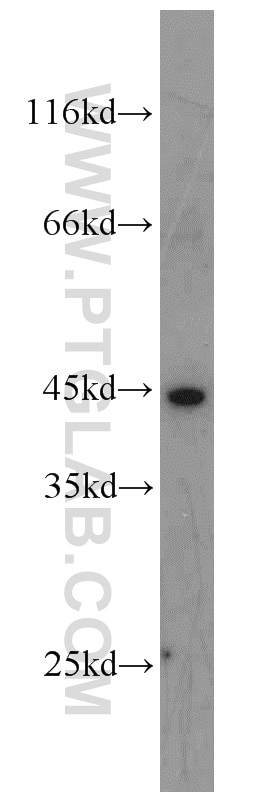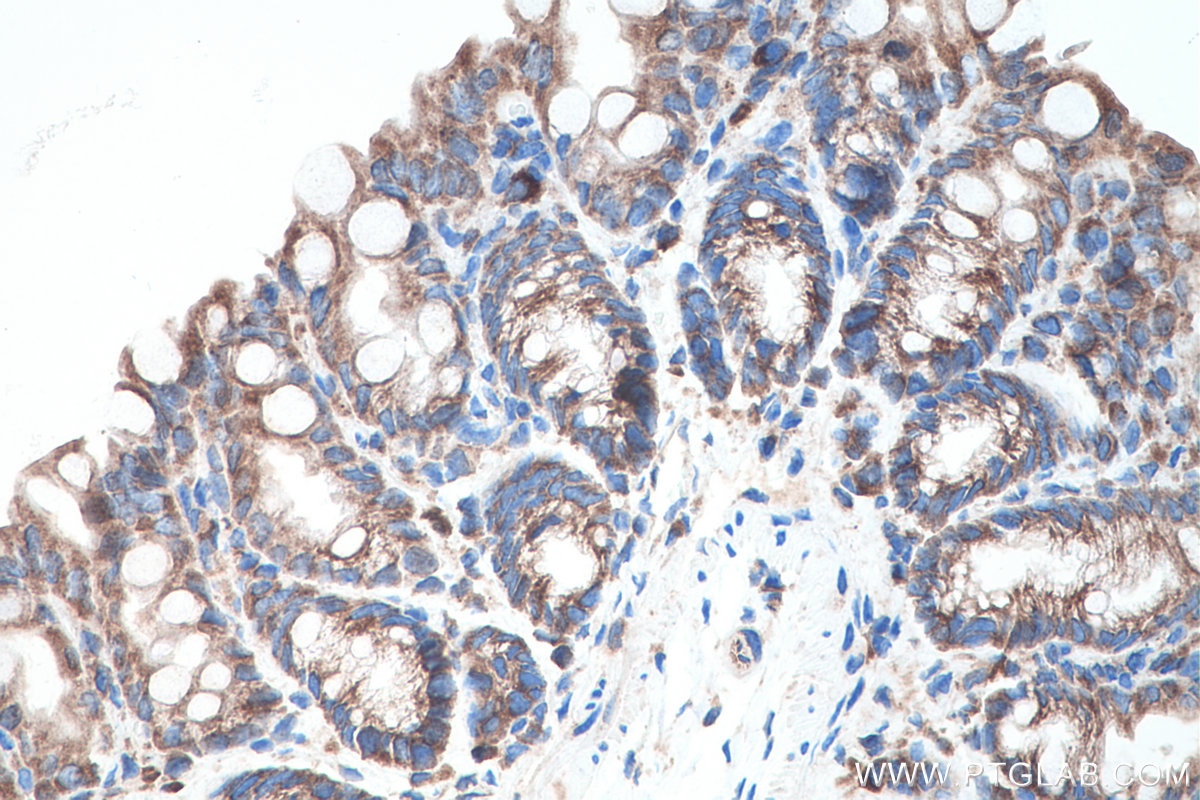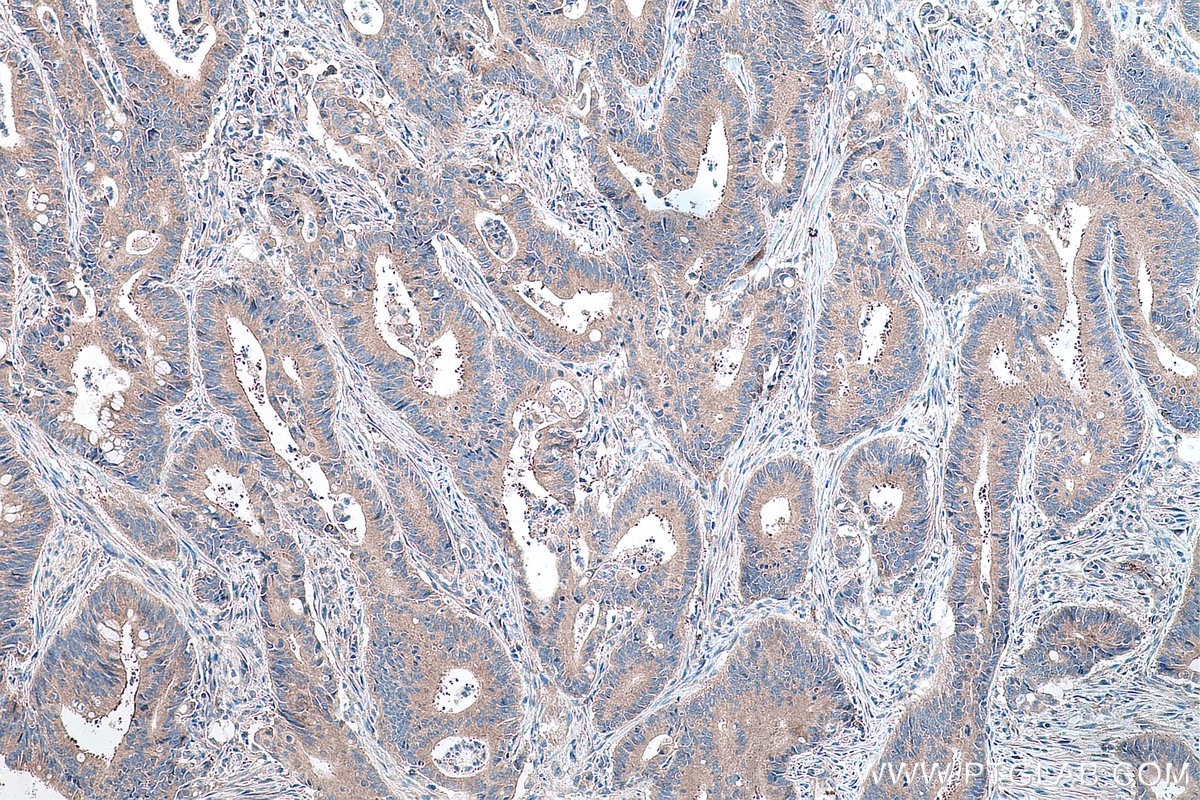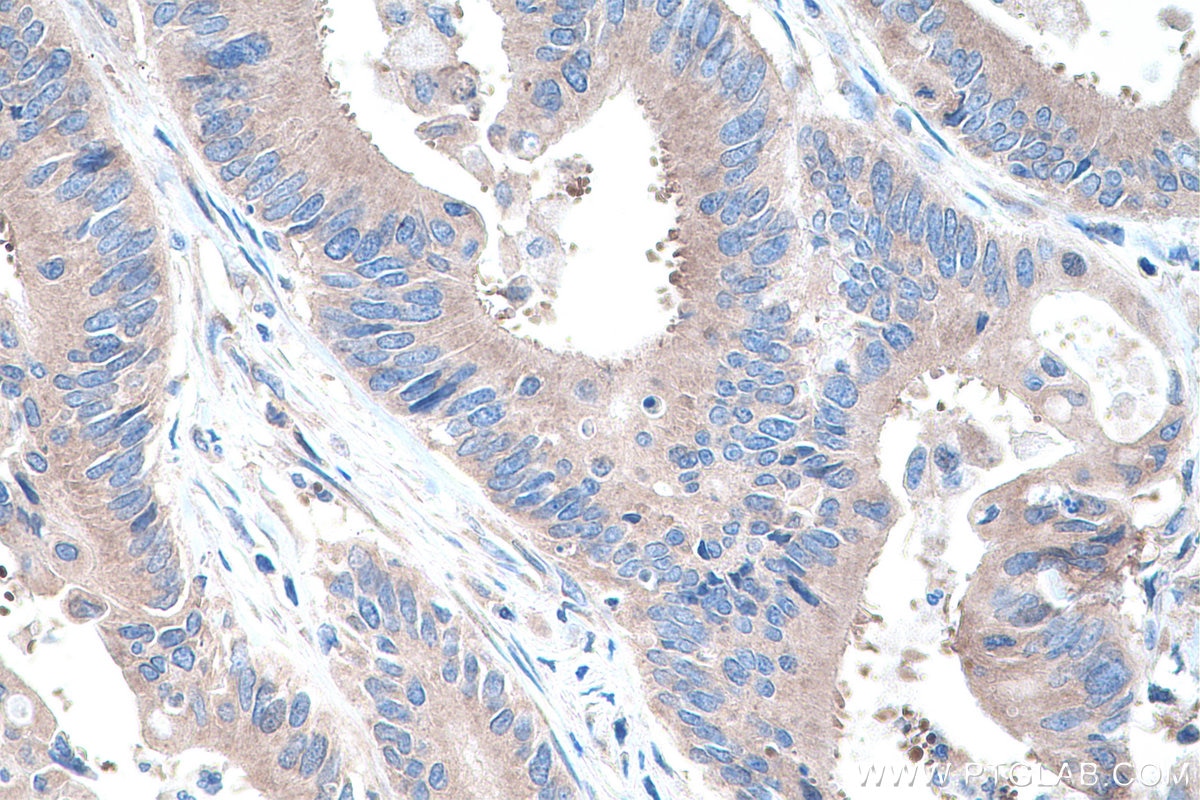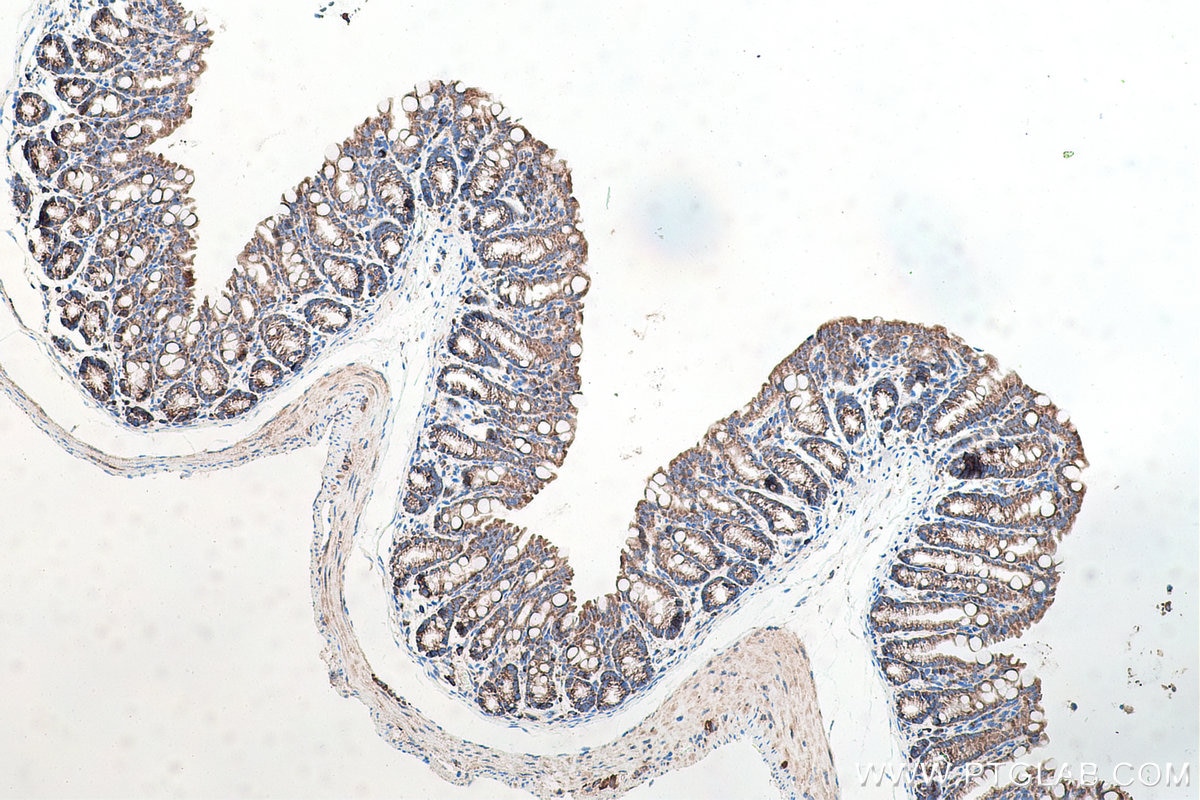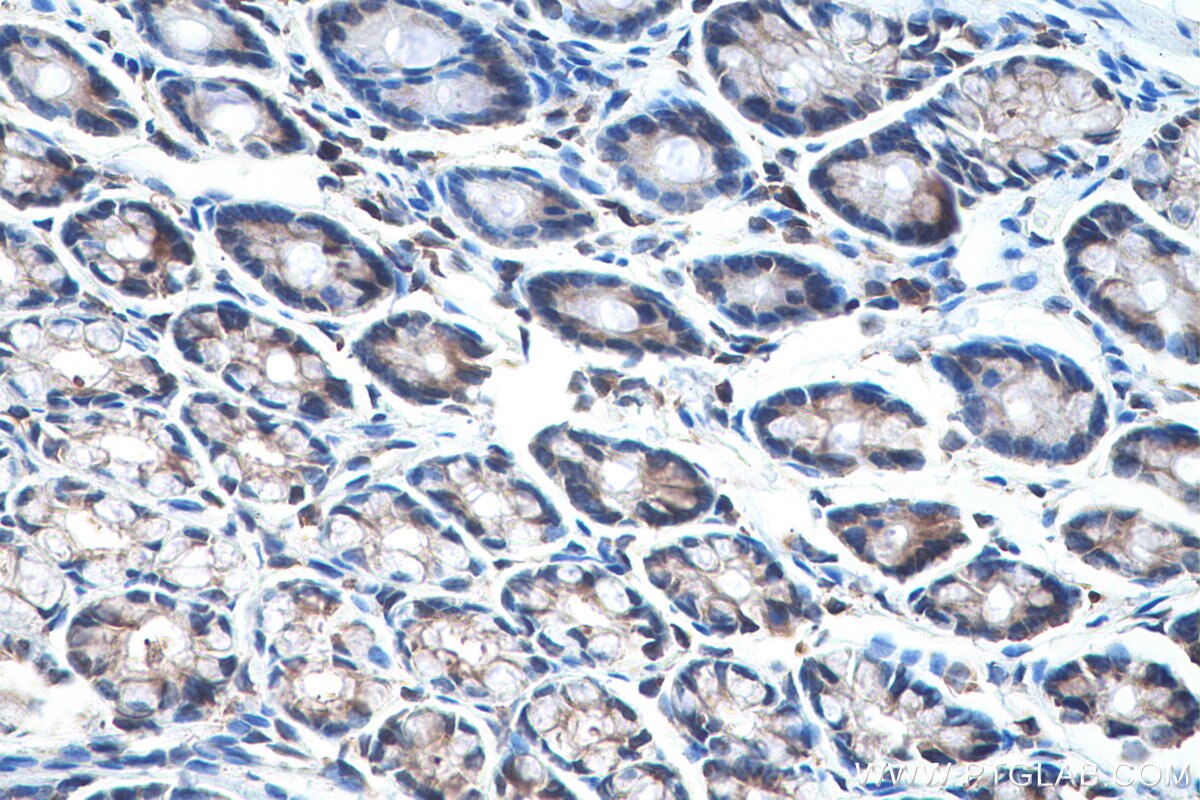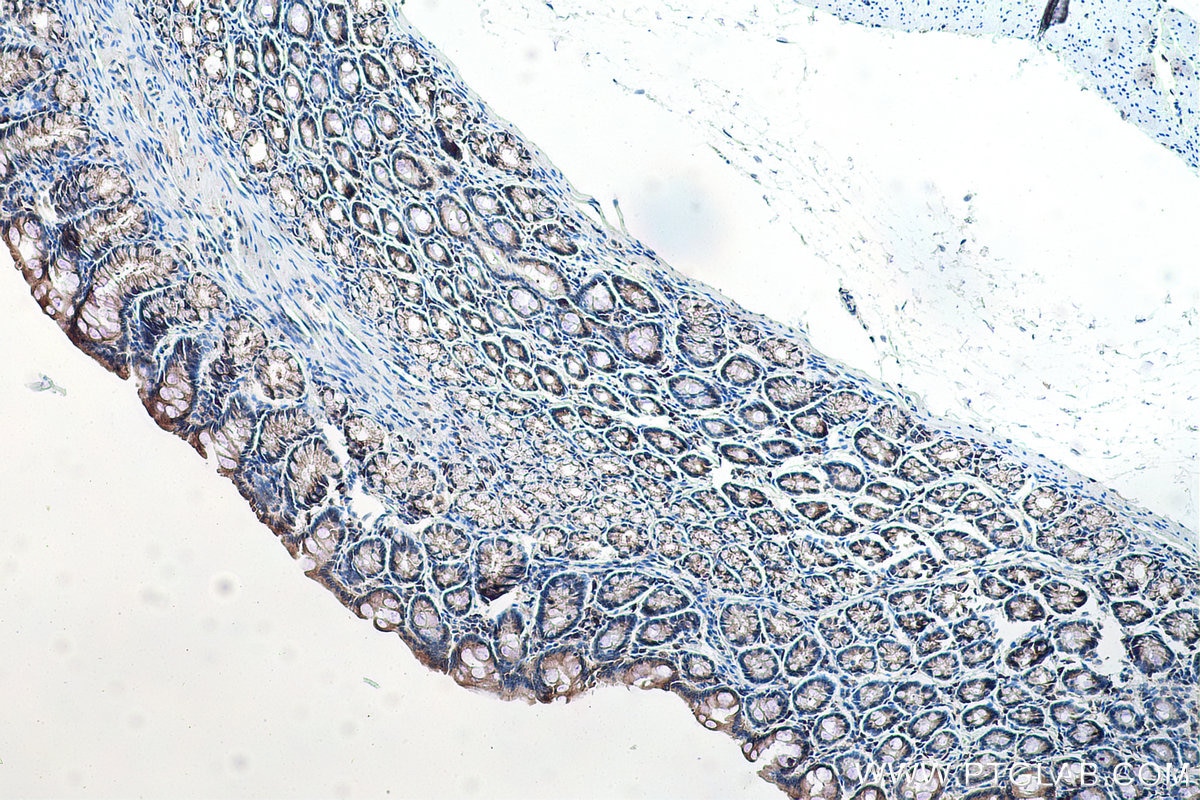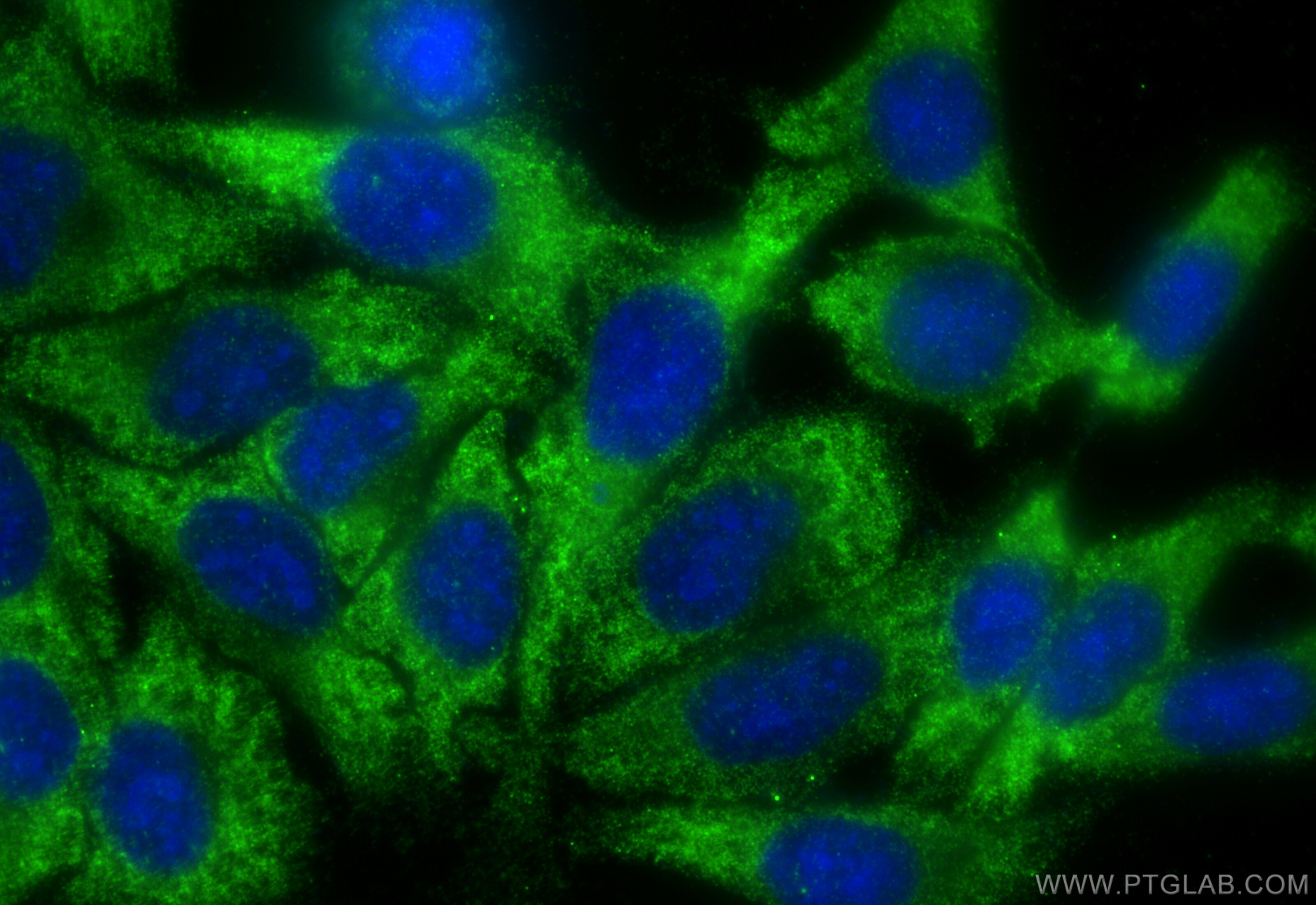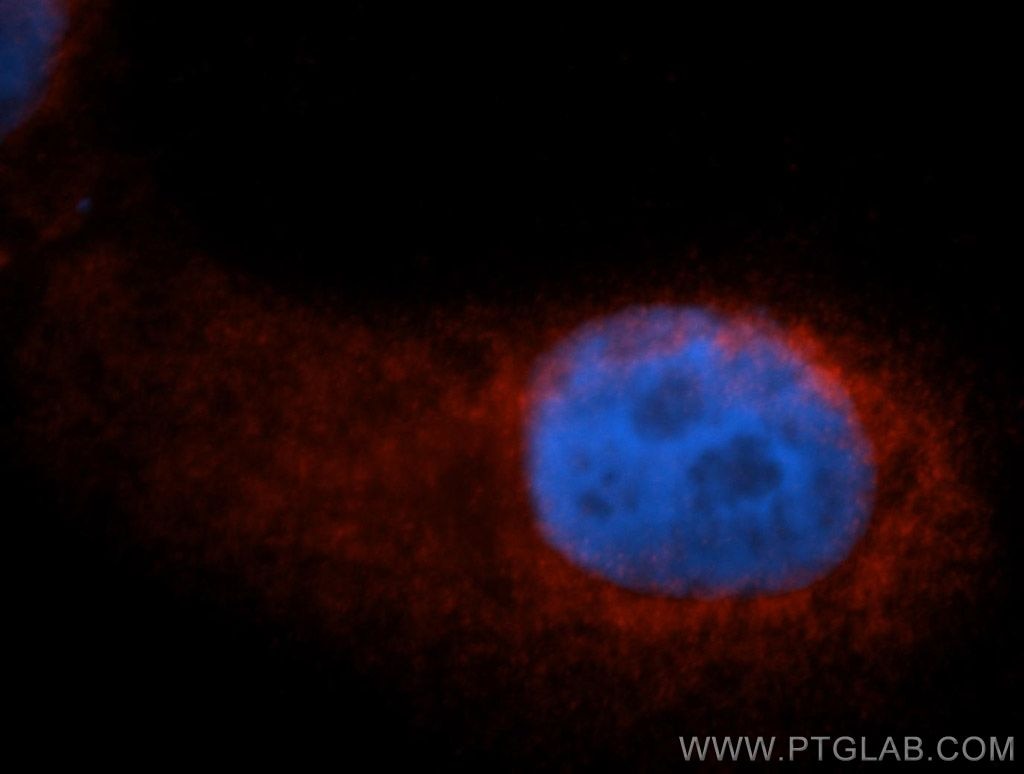EIF3G Polyklonaler Antikörper
EIF3G Polyklonal Antikörper für WB, IHC, IF/ICC, ELISA
Wirt / Isotyp
Kaninchen / IgG
Getestete Reaktivität
human, Maus, Ratte
Anwendung
WB, IHC, IF/ICC, ELISA
Konjugation
Unkonjugiert
Kat-Nr. : 11165-1-AP
Synonyme
Geprüfte Anwendungen
| Erfolgreiche Detektion in WB | HepG2-Zellen |
| Erfolgreiche Detektion in IHC | humanes Kolonkarzinomgewebe, Maus-Kolongewebe, Ratten-Kolongewebe Hinweis: Antigendemaskierung mit TE-Puffer pH 9,0 empfohlen. (*) Wahlweise kann die Antigendemaskierung auch mit Citratpuffer pH 6,0 erfolgen. |
| Erfolgreiche Detektion in IF/ICC | HepG2-Zellen, A549-Zellen |
Empfohlene Verdünnung
| Anwendung | Verdünnung |
|---|---|
| Western Blot (WB) | WB : 1:500-1:1000 |
| Immunhistochemie (IHC) | IHC : 1:500-1:2000 |
| Immunfluoreszenz (IF)/ICC | IF/ICC : 1:200-1:800 |
| It is recommended that this reagent should be titrated in each testing system to obtain optimal results. | |
| Sample-dependent, check data in validation data gallery | |
Veröffentlichte Anwendungen
| WB | See 1 publications below |
| IF | See 2 publications below |
Produktinformation
11165-1-AP bindet in WB, IHC, IF/ICC, ELISA EIF3G und zeigt Reaktivität mit human, Maus, Ratten
| Getestete Reaktivität | human, Maus, Ratte |
| In Publikationen genannte Reaktivität | human, Maus |
| Wirt / Isotyp | Kaninchen / IgG |
| Klonalität | Polyklonal |
| Typ | Antikörper |
| Immunogen | EIF3G fusion protein Ag1653 |
| Vollständiger Name | eukaryotic translation initiation factor 3, subunit G |
| Berechnetes Molekulargewicht | 36 kDa |
| Beobachtetes Molekulargewicht | 44 kDa |
| GenBank-Zugangsnummer | BC000733 |
| Gene symbol | EIF3G |
| Gene ID (NCBI) | 8666 |
| Konjugation | Unkonjugiert |
| Form | Liquid |
| Reinigungsmethode | Antigen-Affinitätsreinigung |
| Lagerungspuffer | PBS with 0.02% sodium azide and 50% glycerol |
| Lagerungsbedingungen | Bei -20°C lagern. Nach dem Versand ein Jahr lang stabil Aliquotieren ist bei -20oC Lagerung nicht notwendig. 20ul Größen enthalten 0,1% BSA. |
Hintergrundinformationen
Eukaryotic translation initiation factor eIF3, that plays a central role in translation initiation, consists of five core subunits that are present in both the budding yeast and higher eukaryotes. The EIF-3 complex associates with the 40S ribosome and facilitates the recruitment of eIF-1, eIF-1A, eIF-2:GTP:methionyl-tRNAi and eIF-5 to form the 43S preinitiation complex. The complex stimulates mRNA recruitment to the 43S PIC and scanning of the mRNA for AUG recognition. It is also required for disassembly and recycling of post-termination ribosomal complexes and subsequently prevents premature joining of the 40S and 60S ribosomal subunits prior to initiation. EIF3G is a component of the EIF3 complex. [PMID:20679478,20503360]
Protokolle
| PRODUKTSPEZIFISCHE PROTOKOLLE | |
|---|---|
| WB protocol for EIF3G antibody 11165-1-AP | Protokoll herunterladen |
| IHC protocol for EIF3G antibody 11165-1-AP | Protokoll herunterladenl |
| IF protocol for EIF3G antibody 11165-1-AP | Protokoll herunterladen |
| STANDARD-PROTOKOLLE | |
|---|---|
| Klicken Sie hier, um unsere Standardprotokolle anzuzeigen |
Publikationen
| Species | Application | Title |
|---|---|---|
Nat Chem Biol Dynamic eIF3a O-GlcNAcylation controls translation reinitiation during nutrient stress. | ||
PLoS Pathog The proximal proteome of 17 SARS-CoV-2 proteins links to disrupted antiviral signaling and host translation. | ||
Cell Death Dis Nitric oxide triggers the assembly of "type II" stress granules linked to decreased cell viability. | ||
Cell Rep N6-methyladenosine in 28S rRNA promotes oncogenic mRNA translation and tyrosine catabolism |
